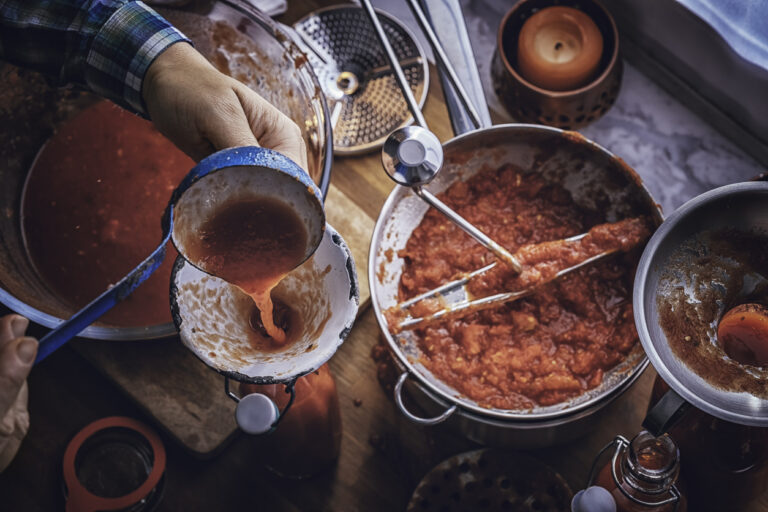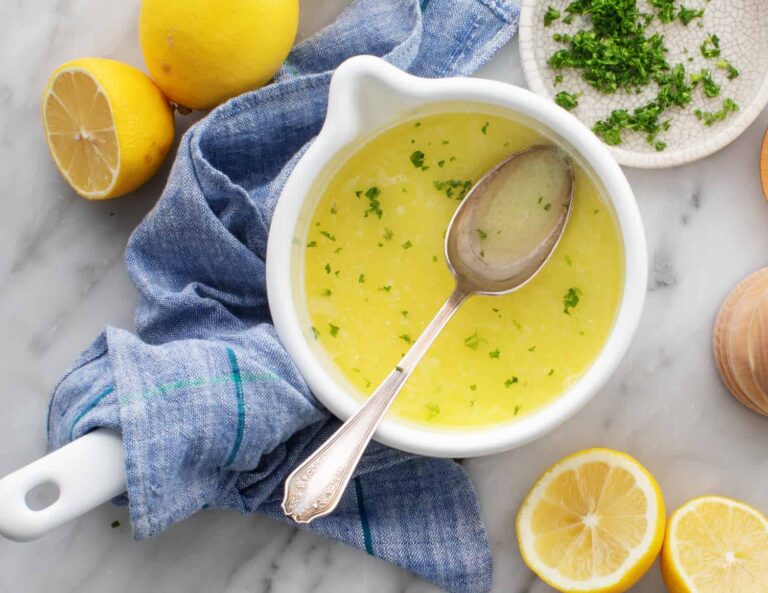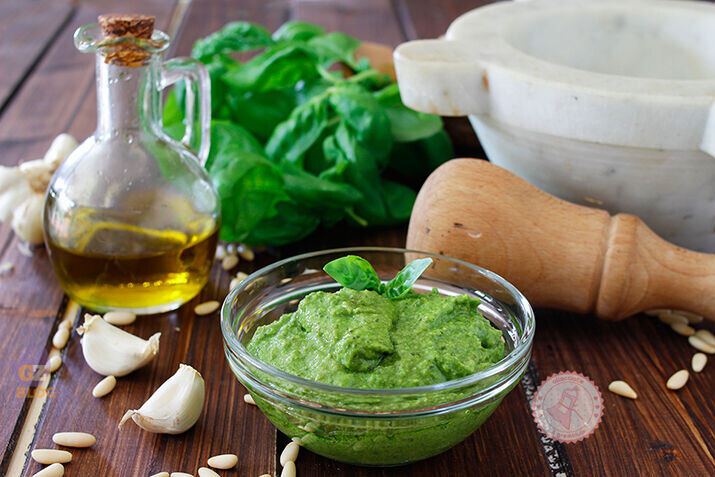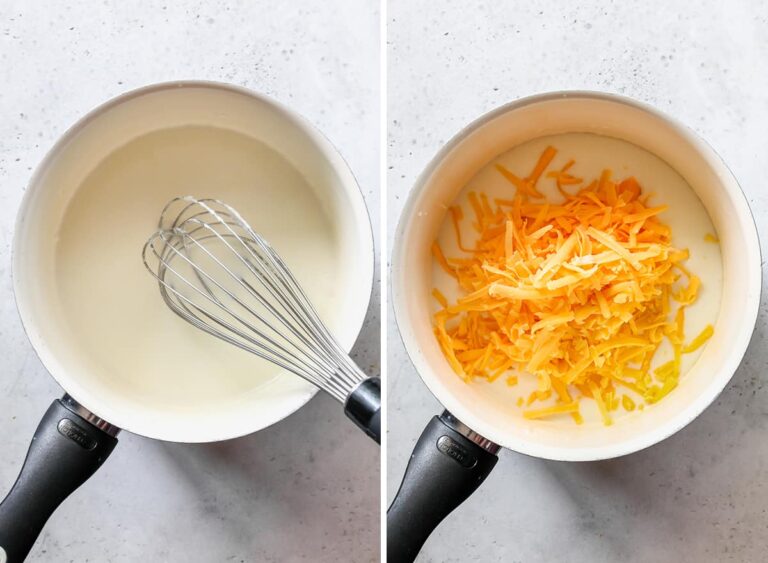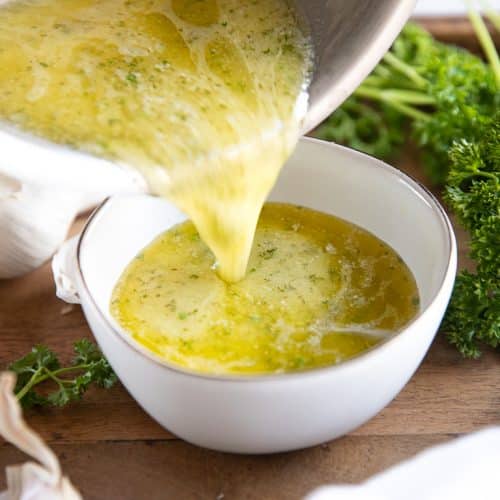Basil pesto is a beloved staple in kitchens worldwide, known for its vibrant flavor and versatility. Whether you’re a gardening enthusiast or a culinary artist, growing your basil can elevate your pesto-making to new heights. This guide covers everything you need to know about gardening and growing basil for pesto, from choosing the best varieties to mastering the harvesting process.

Best Basil Varieties
Choosing the right basil variety is crucial for creating a flavorful pesto. Here are the top basil types to consider for your garden:
Sweet Basil
Sweet basil is the most common and widely used basil variety for pesto. Its large, tender leaves have a sweet, slightly peppery flavor that blends seamlessly with the traditional pesto ingredients of garlic, pine nuts, and Parmesan cheese. Sweet basil is also easy to grow and maintain, making it an ideal choice for beginners.
Sweet basil’s versatility extends beyond pesto. It’s a key ingredient in many Mediterranean dishes, such as Caprese salad and Margherita pizza. The aromatic leaves can also be used in teas, cocktails, and desserts, adding a fresh, herbaceous note.

Genovese Basil
Genovese basil is a staple in Italian cuisine and the preferred variety for authentic Italian pesto. Its robust flavor and slightly larger leaves compared to sweet basil make it perfect for pesto. Genovese basil is known for its aromatic, sweet, and peppery taste that enhances any dish.
Originating from the Genoa region of Italy, Genovese basil is celebrated for its intense fragrance and flavor. This variety is essential for traditional pesto alla Genovese, a sauce that embodies the essence of Italian cooking. Genovese basil is also an excellent choice for infusing oils and making flavored butters.
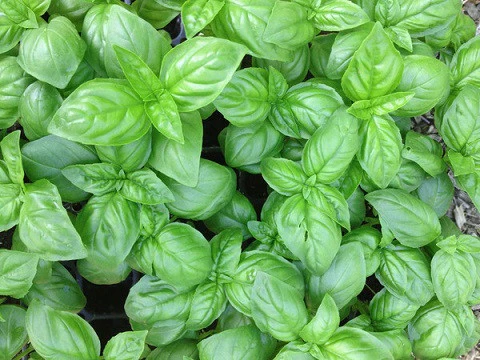
Thai Basil
While not traditional for pesto, Thai basil offers a unique twist with its distinct anise-licorice flavor. This variety adds an exotic flair to your pesto, providing a fresh and spicy note. Thai basil has smaller, pointed leaves and purple stems, making it an attractive addition to any garden.
Thai basil is a cornerstone of Southeast Asian cuisine, particularly in Thai and Vietnamese dishes. Its robust flavor stands up well to high-heat cooking, making it ideal for stir-fries and curries. Incorporating Thai basil into your pesto can create a fusion of flavors that pairs beautifully with seafood, noodles, and grilled meats.

Growing Conditions
For a bountiful basil harvest, it’s essential to provide the right growing conditions. Here’s what you need to know:
Soil Requirements
Basil thrives in well-drained, nutrient-rich soil. The ideal soil pH for basil is between 6.0 and 7.0. Adding organic matter, such as compost, can improve soil fertility and drainage. Basil prefers loamy soil that can retain moisture without becoming waterlogged.
When preparing your garden bed, consider performing a soil test to determine its pH and nutrient levels. Amending the soil with compost, aged manure, or a balanced fertilizer can enhance its fertility. Raised beds or containers with good drainage are excellent options for growing basil, especially in areas with heavy clay or sandy soils.

Sunlight Needs
Basil loves sunlight and requires at least six to eight hours of direct sunlight daily. Placing your basil plants in a sunny spot ensures they receive enough light to grow strong and healthy. In areas with extremely hot summers, some afternoon shade can help prevent the leaves from scorching.
If you’re growing basil indoors, place your plants near a south-facing window or use grow lights to provide adequate light. Rotating the plants regularly ensures even growth and prevents them from leaning towards the light source. Proper lighting is crucial for robust foliage and optimal flavor development.
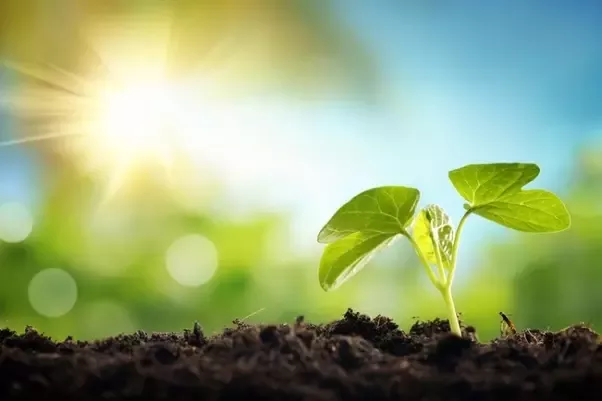
Watering Guidelines
Consistent watering is crucial for basil, but it’s important not to overwater. Basil plants prefer moist soil, so water them deeply once or twice a week, depending on the weather and soil conditions. It’s best to water at the base of the plant to avoid wetting the leaves, which can lead to fungal diseases.
Mulching around the base of the basil plants helps retain soil moisture and regulate temperature. Organic mulches like straw, grass clippings, or shredded leaves are ideal choices. In container gardening, ensure pots have drainage holes to prevent waterlogging, which can cause root rot and other issues.
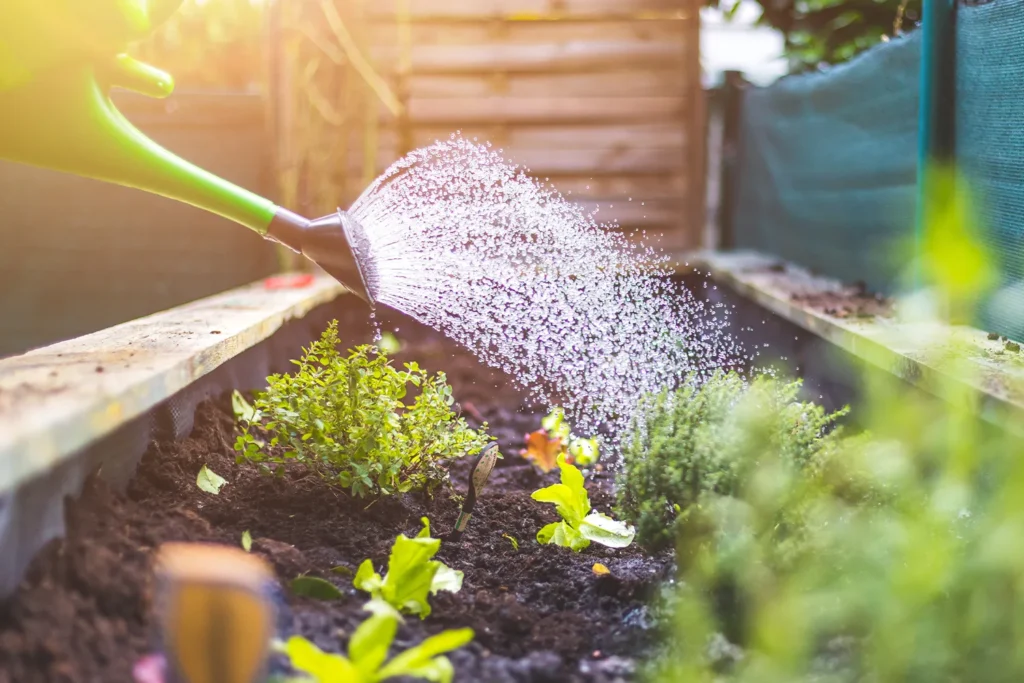
Planting and Care
Whether starting from seeds or transplants, proper planting and care will ensure your basil plants flourish.

Starting from Seeds
Growing basil from seeds is a cost-effective way to start your garden. Sow basil seeds indoors six to eight weeks before the last frost date. Plant the seeds about 1/4 inch deep in seed-starting mix and keep the soil moist until germination, which typically takes five to ten days.
Germination rates can be improved by using a heat mat to keep the soil warm, around 70-75°F (21-24°C). Once seedlings emerge, provide plenty of light and maintain consistent moisture. Thin the seedlings to prevent overcrowding, allowing the strongest plants to thrive.
Seedling Care
Once the seedlings have sprouted, provide plenty of light to prevent them from becoming leggy. A sunny windowsill or grow light works well. Thin the seedlings to the strongest plants, spacing them about 12 inches apart to ensure ample room for growth.
Regularly check the seedlings for signs of stress or disease. Yellowing leaves may indicate nutrient deficiencies or overwatering. Address any issues promptly to ensure healthy growth. Pricking out and transplanting seedlings into larger pots as they grow will give them the space they need to develop strong root systems.
Transplanting Tips
Transplanting basil should be done when the seedlings have at least two sets of true leaves and the threat of frost has passed. Harden off the seedlings by gradually exposing them to outdoor conditions over a week. Plant them in your garden or a large container, maintaining the same spacing as when thinning seedlings.
Dig holes that are slightly larger than the root balls of the seedlings and gently place them into the soil. Firm the soil around the base of the plants and water thoroughly. Basil can be planted alongside tomatoes, peppers, and other warm-season crops, benefiting from their mutual companionship.
Pest and Disease Control
Basil can be susceptible to pests and diseases. Common pests include aphids, whiteflies, and spider mites. Regularly inspect your plants and use insecticidal soap or neem oil if needed. Basil can also suffer from fungal diseases like downy mildew. Ensure good air circulation around your plants and avoid overhead watering to minimize disease risk.
Encouraging beneficial insects like ladybugs and lacewings can help control pest populations naturally. Interplanting basil with marigolds, nasturtiums, or other companion plants can deter pests and enhance overall garden health. Removing any affected leaves or plants promptly prevents the spread of diseases.
Harvesting Basil
Knowing when and how to harvest basil is key to maintaining a continuous supply of fresh leaves for your pesto.

When to Harvest
Basil is ready to harvest when the plant has at least six to eight leaves. For the best flavor, harvest basil leaves before the plant starts to flower. Regular harvesting encourages bushier growth and prevents the plant from becoming leggy.
If your basil plants begin to flower, pinch off the flower buds to redirect the plant’s energy towards leaf production. This practice prolongs the harvest period and maintains the quality of the leaves. Flowering can cause the leaves to develop a bitter taste, so timely harvesting is crucial.
How to Harvest
To harvest basil, use sharp scissors or pruning shears to cut the stem just above a leaf node. This method promotes new growth from the cut area. Avoid stripping the plant of all its leaves at once; instead, harvest a few leaves from each plant to maintain overall health.
Frequent harvesting, about once a week, encourages continuous growth and prevents the plants from becoming woody. Harvesting in the morning, when the essential oils are most concentrated, enhances the flavor and aroma of the basil. Avoid harvesting in the heat of the day, as this can cause the leaves to wilt quickly.

Storing Fresh Basil
Fresh basil can be stored in several ways. Short-term storage involves placing the stems in a glass of water on the kitchen counter, much like cut flowers. For longer storage, refrigerate the leaves in a plastic bag with a damp paper towel. Basil can also be frozen or dried, though these methods may alter the flavor slightly.
To freeze basil, blanch the leaves briefly in boiling water, then transfer them to an ice bath. Pat the leaves dry and store them in airtight containers or freezer bags. Dried basil should be kept in a cool, dark place in an airtight container to preserve its flavor. Crushing the dried leaves just before use releases their essential oils.
Companion Planting
Companion planting is a gardening technique that involves growing different plants together to enhance growth and deter pests. Basil is an excellent companion plant for tomatoes, peppers, and asparagus. It repels harmful insects like mosquitoes and flies while attracting beneficial pollinators.
Planting basil near tomatoes can improve their flavor and growth. The aromatic oils in basil deter pests that commonly affect tomatoes, such as aphids and whiteflies. Similarly, basil can benefit from the shade provided by taller plants like tomatoes and peppers, helping to regulate soil moisture and temperature.
Organic Pest Control Methods
Using organic methods to control pests ensures your basil remains chemical-free and safe for consumption. Companion planting, as mentioned, is one method. Additionally, introducing beneficial insects like ladybugs and lacewings can naturally reduce pest populations.
Handpicking pests, such as caterpillars and beetles, from your basil plants is another effective method. Using barriers like row covers can protect young plants from insects. Applying organic sprays made from neem oil or insecticidal soap can control infestations without harming the environment.
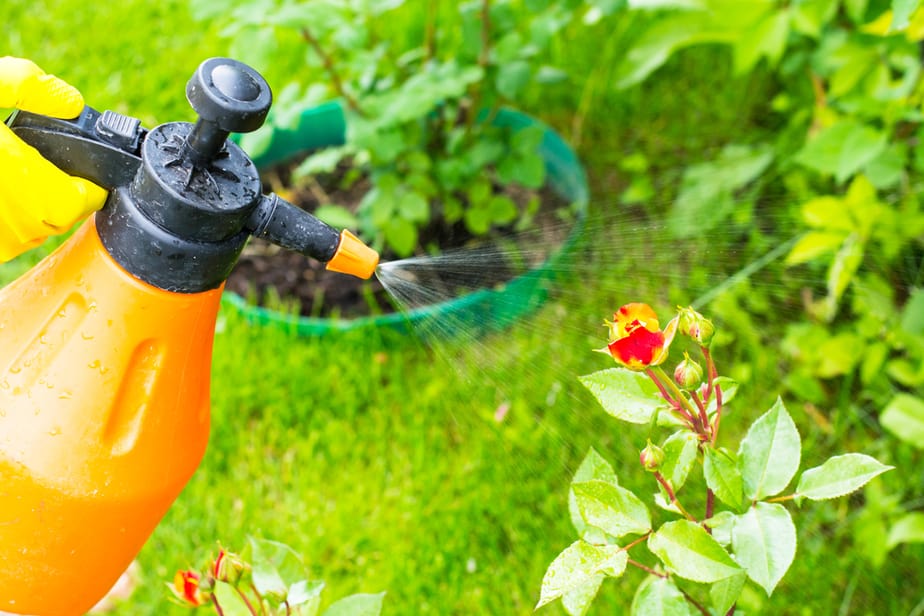
DIY Basil Projects
Basil isn’t just for pesto; there are many creative ways to use this versatile herb. Basil-infused oils and vinegars are simple to make and add a gourmet touch to salads and dishes. To make basil oil, blend fresh basil leaves with olive oil and strain the mixture to remove solids.
Basil can also be used to make refreshing beverages, such as basil lemonade or basil-infused cocktails. For a fragrant touch, add basil leaves to homemade soaps and candles. Basil’s antibacterial properties make it a valuable addition to natural cleaning solutions as well.
Troubleshooting Common Issues
Despite its hardiness, basil can face various challenges. Yellowing leaves often indicate overwatering or nutrient deficiencies. Ensure your basil receives adequate light and well-drained soil. Regularly inspect the plants for pests and remove any affected parts promptly.
Slow growth can be a sign of poor soil quality or insufficient sunlight. Testing the soil and adjusting its composition can resolve many growth issues. If basil plants are not producing many leaves, consider pinching off the tops to encourage bushier growth.
Seasonal Care Tips
Caring for basil plants through different seasons ensures a continuous harvest. In spring, start seeds indoors to get a head start on the growing season. Transplant seedlings outdoors after the last frost date and ensure they receive plenty of sunlight.

During the summer, maintain consistent watering and provide some afternoon shade in very hot climates. In the fall, consider bringing potted basil plants indoors to extend their growing season. Prune the plants regularly and provide adequate light to keep them thriving indoors.
FAQs
Disclosure: Our blog contains affiliate links to products. We may receive a commission for purchases made through these links. However, this does not impact our reviews and comparisons. We try our best to keep things fair and balanced, in order to help you make the best choice for you.


